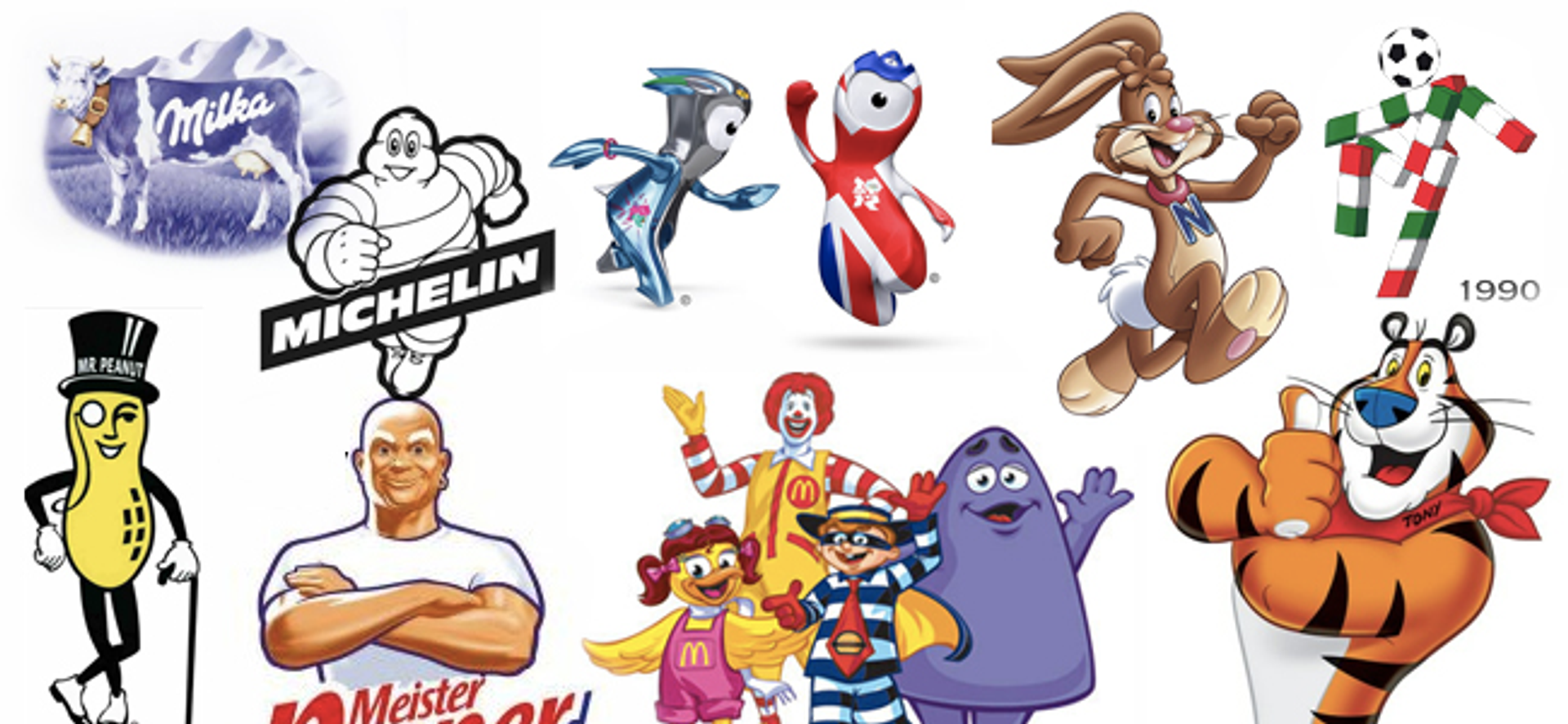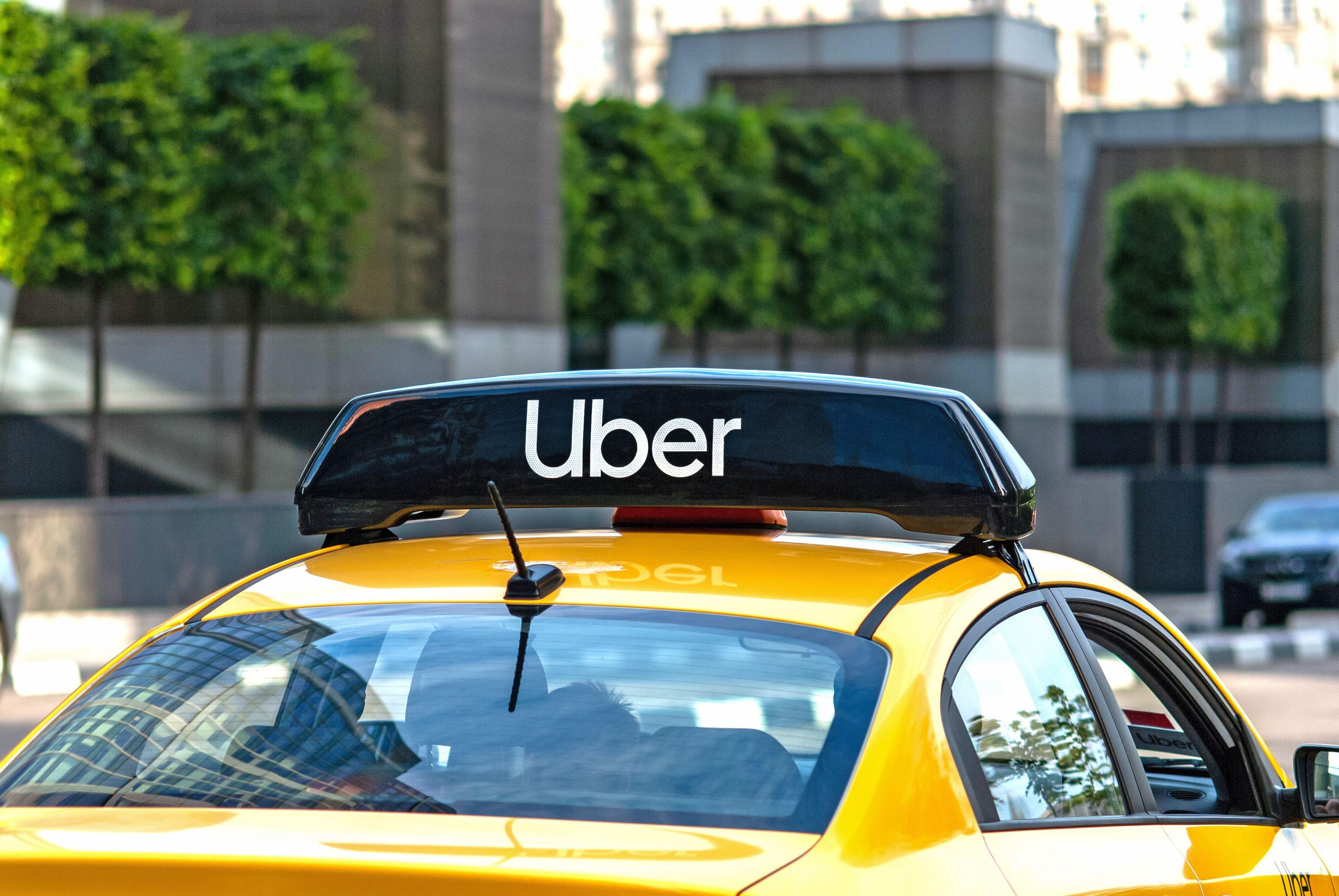In a world full of businesses everywhere, it is important to stand out, and a brand that has a strong identity will always separate itself from the rest. Mascot branding, if done effectively, can be a very effective tool to connect with your audience and build strong recall among users.
This guide will aid you in making and utilizing a mascot for your business that will leave a powerful imprint on your target audience.
Understanding Mascot Branding
In this competitive market, establishing a trustworthy brand that appeals to most people is crucial. That is where mascots come in. Mascots use different characters to build emotional connections with the audience, increasing businesses’ approachability as brand ambassadors. They enhance the brand narrative by transforming it from a static logo into a dynamic storytelling element.
They serve as the “face” of a brand and build trust and recall over time. From silly creatures to well-known persons, mascots can reflect what the brand stands for and what messages it seeks to deliver to its customers, thereby improving the brand’s image and enhancing the brand loyalty of the fans and customers.
Source: peppercontent

Whether you want to engage with your customers, tell a particular story, or want to be different, mascot branding is a tool to use.
What Is a Brand Mascot?
A brand mascot is a character that embodies a brand’s values, mission, and personality, serving as a visual and emotional representation of the brand. Whether it’s a person, an animal, or an abstract figure, a brand mascot is designed to be memorable, recognizable, and engaging.
The primary goal of a brand mascot is to create a positive association with the brand, making it more relatable and human. For instance, the Kool-Aid Man, with his iconic “Oh yeah!” catchphrase, not only represents the fun and refreshing nature of the beverage but also enhances brand recognition and emotional connection with the audience.
Benefits of Having a Brand Mascot
Every company can benefit from a branded mascot as its impact can be unrivaled. Unlike commonly thought, a mascot does not merely add an element of creativity or fun. Still, it is an essential strategic device to elevate the company's professional brand image and customer service.
A well-crafted mascot can also be beneficial as it does not have to be a human figure; it can be transformed into a memorable symbol that speaks for the brand. Below is a list of every marketing professional's dreams.
Boosts Brand Recognition
Brand mascots help customers identify the company without any introduction. For example, Tony the Tiger and the Geico Gecko are not just representatives of specific brands. They are logos in their own right. The Jolly Green Giant is another example of a recognizable mascot that helps build brand recognition.
Source: genius

Creates Emotional Connection
Mascots personify a brand with their iconic image, helping create a lasting emotional connection with clients and targeted customers. They develop feelings that are quickly affiliated with the brand.
Enhances Storytelling
A mascot is more than just a fun character. The branded figurine can become the focal point of advertisement, social media, and campaigns.
Mascots contribute to memorable advertising campaigns that enhance brand recognition by creating lasting emotional connections and resonating with consumers.
Increases Customer Engagement
Social media, events, and promotional items are effective ways to communicate with customers, and that is what mascots excel at. Mascots engage with consumers through promotional events, driving brand awareness and loyalty. The possibilities are endless. They enable an audience member to go beyond the item or service being offered.
Appeals Across Generations
Well-crafted mascots can appeal to consumers of all ages, from children to adults, increasing a brand’s appeal.
The Jolly Green Giant brand, with its iconic mascot, has long been a symbol of freshness and vitality, appealing to generations of consumers and enhancing brand loyalty.
Identifying Your Brand’s Core Values
Identifying your brand’s core values is a crucial step in creating a successful brand mascot. These core values are the guiding principles that shape your brand’s behavior and decision-making processes. They form the foundation of your brand’s identity and personality.
To pinpoint these values, ask yourself what your brand stands for, what it believes in, and what it aims to achieve. Conducting research and gathering feedback from customers, employees, and stakeholders can provide valuable insights into your brand’s values. A brand mascot that embodies these core values can effectively communicate what your brand stands for, fostering a deeper connection with your audience.
Understanding Your Brand’s Mission and Vision
Understanding your brand’s mission and vision is essential in creating a successful brand mascot. Your mission statement defines your brand’s purpose and immediate goals, while your vision statement outlines what your brand aspires to achieve in the future. These statements should align with your core values and provide a clear direction for your brand.
A brand mascot that reflects your mission and vision can help communicate your brand’s purpose and long-term goals to your audience. For example, a tech company with a mission to innovate might choose a futuristic robot as its mascot, symbolizing its commitment to cutting-edge technology and forward-thinking solutions.
Defining Your Brand’s Personality and Tone
Defining your brand’s personality and tone is critical in creating a successful brand mascot. Your brand’s personality is the way it behaves and interacts with its audience, while its tone is the way it communicates its message. These elements should be consistent across all marketing channels and should be reflected in your brand mascot.
For instance, if your brand is known for its playful and humorous approach, your mascot should embody these traits, making it instantly recognizable and relatable. A consistent personality and tone help create a cohesive brand image, enhancing brand recognition and loyalty.
Aligning Your Brand Mascot with Your Core Values
Aligning your brand mascot with your core values is essential for creating a successful brand mascot. Your mascot should be a direct reflection of your brand’s values, mission, and personality. It should be designed to communicate your brand’s message and create an emotional connection with your audience. A mascot that aligns with your core values can help build brand recognition, foster brand loyalty, and enhance your brand’s image.
It can also differentiate your brand from competitors, creating a unique and memorable brand identity. By ensuring that your mascot embodies your brand’s core values, you can create a powerful marketing tool that resonates with your audience and strengthens your brand’s reputation.
Types of Brand Mascots
Anthropomorphic Mascots
These mascots imbue inanimate objects or products with human characteristics needed for them to come alive. This enables the products to have arms, legs, facial expressions, or even the ability to talk, allowing people to connect with the products on a more human level.
Source: momandmore

For instance, an animated food item that talks directly to the audience will likely stir an emotional connection, making the product enjoyable. A classic example would be the children's cereal characters or overly friendly cleaning supplies that people can never forget.
Animal Characters
Many brands adopt animals as mascots because they tend to represent specific characteristics – dogs for loyalty, owls for wisdom, cheetahs for speed, or even monkeys for playfulness. This is appealing to the audience because animals trigger a sense of familiarity and emotions.
Source: worldbranddesign

It could be a kind of gecko selling car insurance or an energetic tiger serving as a symbol of strength, but animal mascots are a great way to reinforce the brand attributes that consumers value.
The same applies to insurance mascots like the Geico Gecko, Jake from State Farm, and Mayhem from Allstate, who make the brand more relatable and emotionally appealing, leading to brand loyalty.
Human Characters
Human mascots develop vivid personalities that resonate with a target audience, allowing brands to forge a connection with customers. Depending on the brand image, tone, and target customers, mascots can be comical or sophisticated.
Not all mascots are designed to sell products. Some, like Woodsy the Owl, play crucial roles in promoting social causes such as environmental conservation.
Source: wallpapers

For example, a benevolent chef may serve as the image of the cooking brand, while a self-assured, witty, and charming spokesperson would do a better job at marketing a Trust Company. When a company mascot shows the brand ethos meaningfully, it helps in more authentic brand storytelling.
Abstract Creatures
Abstract mascots have no bounds, resembling whatever brands think is appealing to them. These characters are not bound by the limitations of the real world - or any artificial objects, animals, or people - which gives them the utmost freedom to give life to whatever encompasses the brand’s core.
Source: paultan

There are no limits, from the imaginary alien to a colorful splat and even a robot from the future. There’s something for everyone. They are distinct, eye-catching, and appeal to a broad range of customers. They are the best way brands can stand out from the crowd and present their creativity boundlessly.
What Makes a Good Mascot
Backstory
Draft a captivating, in-depth origin story for your character. Where does it come from? What was the motivation behind it? Developing a backstory emphasizes your character's attributes, objectives, and emotions, making it appealing to the audience.
A good origin story can also be used within your marketing material. This is when the audience is explained how the character represents the importance of the brand and its pillars.
Personality Traits
Define your character's behavioral characteristics and traits that will make your mascot more appealing. Is it humorous, funny, sophisticated, caring, or bold and adventurous?
Source: youtube

None of these traits should only make your mascot appealing but should flow with your entire brand image. A consistently portrayed personality helps audiences build familiarity with your mascot, making it a core and familiar feature of your brand.
Voice and Tone
You first have to set guidelines for your character's voice and tone. How does your character communicate? Is it bickering, inspiring, or humorous?
Different characters have different traits, which adds diversity, economy, and innovation. This makes your character stand out, which merely contributes through channels such as social media and advertisement, enhancing your character's appeal and brand.
Evolution Plan
Consider growing your mascot together with your brand. The evolution of your brand should seamlessly correspond to an update in the character of the mascot while retaining the brand's core value.
For instance, a change in the market and a change in values enables a new response in the design of mascots. Effective evolution plans allow your business's mascot to remain appealing and relevant for a prolonged period while remaining on brand with the overall company vision.
How to Design a Mascot
Designing a brand mascot helps portray your firm in a way that distinguishes you from the competition while ensuring you resonate with your users.
Source: visualcontent.space

Once an iconic mascot is created, he becomes an asset for marketing the business and an aid for the customers to bond with the brand emotionally. The bad side is that effective marketing backs the high visibility of the brand, turning these mascots into marketing tools instead of the opposite. These are the essential steps to create an exemplary character for a brand:
Define Your Brand Values
Identify the mission of your firm. Essentially, what is the cause for which the company exists, what feelings do you want to stir among people, and what does the company's brand stand for to the people?
A mascot can serve as a direct manifestation of your values and mission. Furthermore, confirming that the target audience's character and expectations agree with the mascot's design and mannerisms is critical.
Choose a Character That Fits Your Brand
Choosing the exemplary character for your brand is critical. Ask yourself what your brand stands for and what character best represents it.
An animal might convey playfulness or adaptability, a human figure can signify trust and relatability, and an abstract shape might suggest creativity and innovation. For example, a futuristic robot may be used by a tech company, while a cheerful animal may be adopted by a brand that targets families.
Design Your Mascot’s Personality
As you take this step, always think of the audience you are trying to appeal to. Which personality attributes fit the image of your company? On the other hand, is your audience seeking a more playful character, someone a bit more professional, friendly, or authoritative?
All these options are valid, but using a more edgy design, such as an annoying mascot, toy brand, or gimmick, would be inappropriate.
Think Outside the Box with the Design
To make your mascot something that will be firmly remembered, consider giving it eccentric and eye-grabbing features like bold colors, unusual proportions, or quirky accessories to make it stand out.
Source: Firmbee.com on Unsplash

Do not be afraid to unleash your imagination. Your mascot should be distinct enough to leave an impression but still simple enough to be easy to recognize in different environments, such as social media or advertisements.
Work with a Professional Graphic Designer
A professional touch is needed to implement all your ideas and make your mascot look alive. Work with an experienced graphic designer to transform your vision into a polished, vivid design that showcases your brand's identity and message.
Ensure the desired look works globally - from the website and promotional material to packaging. A professional can help perfect how the mascot should appear and draw the attention of a varied audience.
Test and Collect Feedback
Try your mascot concept with your target consumer before you fully develop your ideal mascot. Gather feedback to ensure that your design resonates with the brand values. Make the needed changes to the design or character so that the mascot meets your branding needs.
Follow the guide provided, and you will indeed have a mascot that acts as the core representation of your business, grabs people's attention, and is approachable. A strong and valuable brand emblem can help improve awareness and engagement while also improving loyalty, making it an invaluable part of the business.
Brand Mascot Design Principles
A brand's mascot is simultaneously an artistic and strategic business endeavor. As such, here are some more principles to help you succeed in this task:
- Keep it Simple: Simple icons work better and are more applicable to the audience. Such designs are easy to recognize and remember. Steer away from intricate embellishments that tend to overwhelm the eyes.
- Make it Memorable: The mascot should have distinguishing characteristics so that it is easily remembered. For example, Mickey Mouse's ears are known to everyone.
Source: pinterest

- Use Color Effectively: The colors used are essential in achieving a distinctive design. Choose colors that succinctly tell a story about the brand while also trying to evoke the correct emotions.
- Reflect the Brand’s Personality: The character should be designed to capture the elements of the company it is designed for. The mascot design should be aligned with whether Jolly is serious or simply looking to make head-turns.
- Maintain Consistency: Brand awareness and recognition are built on trust, which is why you need to maintain the same design for the mascot across all forms of marketing, whether it is social media advertisements or business events.
Incorporating these lessons enables the individual to construct a well-designed brand mascot that attracts attention while powerfully embodying the campaign's targets and ethos.
Famous Brand Mascot Examples
Iconic brand mascots are a powerful tool for creating memorable, emotional connections with consumers. They help bring personality to a brand, making it more relatable and engaging.
The Jolly Green Giant is an example of a famous mascot that has stood the test of time. Here are some iconic examples of best brand mascots that have stood the test of time and continue to resonate with audiences:
Cornerstone
In our collaboration with Cornerstone, we leveraged custom brand characters and integrated motion design to craft a warm, approachable, and engaging experience for users.
By combining thoughtful design elements with dynamic, animated visuals, we created a friendly and memorable first impression that not only enhanced the brand's visual identity but also improved overall user interaction.
This attention to detail ensured a cohesive, impactful design that resonated with Cornerstone’s audience.
Cornerstone website
Duracell Bunny
Known for its endless energy and constant movement, the Duracell Bunny perfectly symbolizes reliability and long-lasting power, aligning seamlessly with the brand's promise of durable batteries.
Source: kindpng

Introduced decades ago, this iconic brand mascot has become a global icon, reminding consumers that Duracell batteries outlast the competition. Its association with energy and dependability has cemented its place as a household symbol of trust.
Ronald McDonald
This cheerful clown has been the face of McDonald’s since the 1960s, representing fun, family, and accessible dining.
Ronald McDonald is more than just a fast-food iconic brand mascot - he’s part of the brand's identity, appearing in advertisements, promotions, and even community initiatives such as Ronald McDonald House Charities.
Source: pinterest

His friendly demeanor and colorful outfit have made him one of the most recognizable figures in the fast-food industry, embodying the joy and comfort of sharing a meal.
M&Ms Spokescandies
The animated, colorful M&M characters add humor, charm, and personality to candy marketing. Each "spokescandy" has a distinct personality - from the confident Red to the anxious Yellow - making them relatable and entertaining for audiences of all ages.
Introduced in the 1990s, these characters have evolved into pop culture icons, appearing in commercials, social media campaigns, and even movie parodies. Their ability to connect with audiences through witty banter and humor has kept the brand fresh and engaging over the years.
Source: yahoo

These famous company mascots demonstrate how a well-designed character can embody a brand’s values, enhance recognition, and create lasting emotional connections with customers. By giving a face - or personality -to a product, mascots help humanize brands, making them more approachable and memorable in the minds of consumers.
Brands Without Mascots
Think about the brands that feel like old friends - chances are, many don't have a mascot at all. That sleek Apple logo on your laptop? No smiling fruit character needed. Nike's iconic swoosh? It speaks volumes without a cartoon athlete. These companies prove you don't need a brand spokesperson with a face when your visual identity is strong enough to do the talking.
From the minimalist elegance of Chanel's interlocking C's to Google's playful (but mascot-free) rainbow letters, some of the world's most beloved brands let their logos and products take center stage. Even Starbucks, which does have the siren mascot, is often recognized just by its green circle logo. It turns out that when your brand has real personality, you don't need a cartoon character to vouch for you. The lesson? Great branding is about creating instant recognition and emotional connection - with or without a mascot in the picture.
Not Every Business Needs a Mascot (And That's Okay)
Let's be real - while the Geico gecko and Tony the Tiger work great for their brands, a mascot would look downright silly for some businesses. Picture this: a cuddly cartoon character trying to sell you a $10,000 watch or represent your divorce attorney. Some industries just aren't mascot material.
Take high-end brands, for instance. When you're dropping serious cash on a Rolex or Chanel bag, you want to feel that luxury - not like you're buying cereal. These brands speak through their craftsmanship and heritage, not through some animated spokesperson. The same goes for professional services. Your heart surgeon's office probably shouldn't have a grinning cartoon scalpel on the door - it sends the wrong message entirely.
Even in less serious industries, sometimes simple is better. Tech giants like Apple and Google became iconic through clean design and innovation, not mascots. And let's not forget those businesses where a mascot could actually be problematic - nobody wants to see a cheerful cartoon character promoting cigarettes or payday loans. The truth is, knowing when not to use a mascot is just as important as creating a great one. Your brand's personality should feel authentic, not forced.
Read more:
Conclusion
In conclusion, a thoughtfully crafted mascot branding strategy can play a key role in boosting your business. With consistency and attention to detail, your mascot can evolve into a powerful tool for building brand recognition and fostering lasting customer loyalty.


About Clay
Clay is a UI/UX design & branding agency in San Francisco. We team up with startups and leading brands to create transformative digital experience. Clients: Facebook, Slack, Google, Amazon, Credit Karma, Zenefits, etc.
Learn more

About Clay
Clay is a UI/UX design & branding agency in San Francisco. We team up with startups and leading brands to create transformative digital experience. Clients: Facebook, Slack, Google, Amazon, Credit Karma, Zenefits, etc.
Learn more


